Ideas for Christmas and winter decorations from your garden using twiggy plants – including how to make a Christmas wreath using twisted willow boughs and ideas for using hazel catkins.
Twiggy plants provide interesting shapes for home decoration and make great additions to any garden. Compared to the bountiful spring and summer months my garden offers slim pickings for winter home decoration so I’m always looking for plants to provide impact when artfully displayed with indoor bulbs or shop-bought flowers. I really value two twiggy plants in particular – Twisted Willow and Hazel. They earn their keep as garden specimens in any sized garden and are versatile as home decoration.
Twisted Willow (Salix babylonica Tortuosa)
A garden must-have, this plant is also commonly known as the ‘Dragons Claw Willow’ or more charmingly the ‘Wiggly Willow’. I was given a small cutting by a friend five years ago and it now forms a gloriously convoluted clump, scattered with fresh green shoots in spring becoming wispy leaves summer. In winter the curly branches twist like fireworks from the soil, mustard yellow with coral tones and pinky tips.
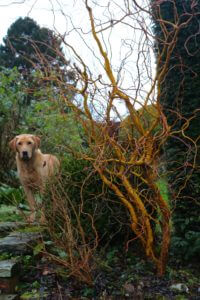
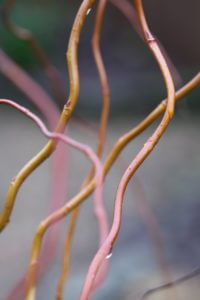
I have found twisted willow very easy to grow. I simply planted my cutting in a bright position in fairly poor soil with normal drainage. Like so many plants in my garden I then ignored it and it thrived nevertheless. Like other willows, which thrive by riversides, I have always assumed it likes damp soil so very dry soils should probably be avoided.
Cutting whole lengths of the willow branches in winter is so tempting and once your plant is a couple of years old, taking some of the branches will not damage the overall look of your plant.
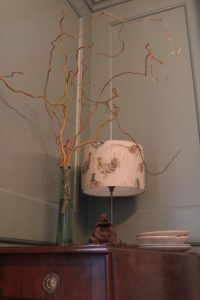
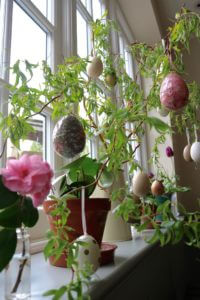
The shapes of these willow boughs are so enthralling that simply placing a few into a narrow necked vase will create a stunning display with no need for further additions. You will probably find that the plant will come into leaf indoors. Use this to your advantage and hang the boughs with blown egg decorations for Easter. If placed in water, the cut boughs will also likely start to root, giving you rooted cuttings to plant out in the garden in spring.
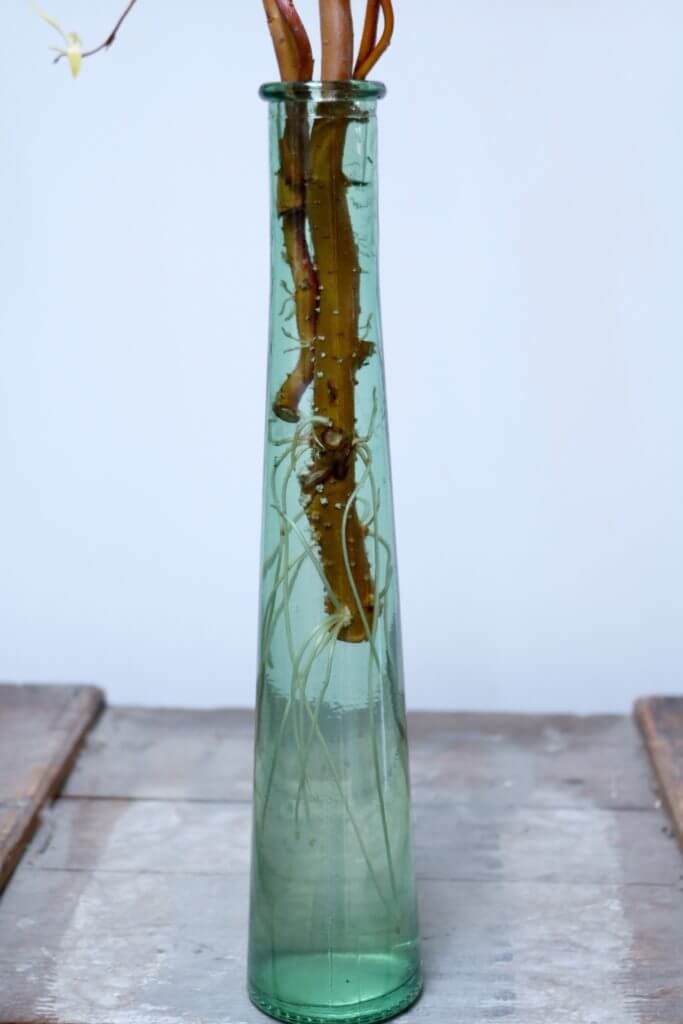
A fantastic combination in winter is amaryllis and twisted willow. If you buy cut amaryllis, place some twisted willow in the vase with them, or you can use willow as a support for amaryllis plants grown from bulb at home. It’s an elegant combination.
How to make a Christmas Wreath using twisted willow
You will find that the top sections of the branches are remarkably bendy when first cut and therefore can be shaped and bent. In December I made my Christmas door wreath by forming a circle with a first length, then twisting further lengths round it, tying each one on with garden string. Using offcuts from garden greenery, or your Christmas tree, combined with flowers or as here – Mistletoe – a pretty nature-inspired wreath can be created at little costs.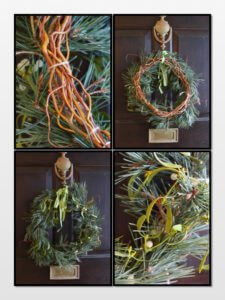
With a bit of imagination and fiddling, many shapes are possible if the willow is fresh and flexible – here a heart-shaped door decoration for Valentine’s Day,
Hazel (Corylus avellana)
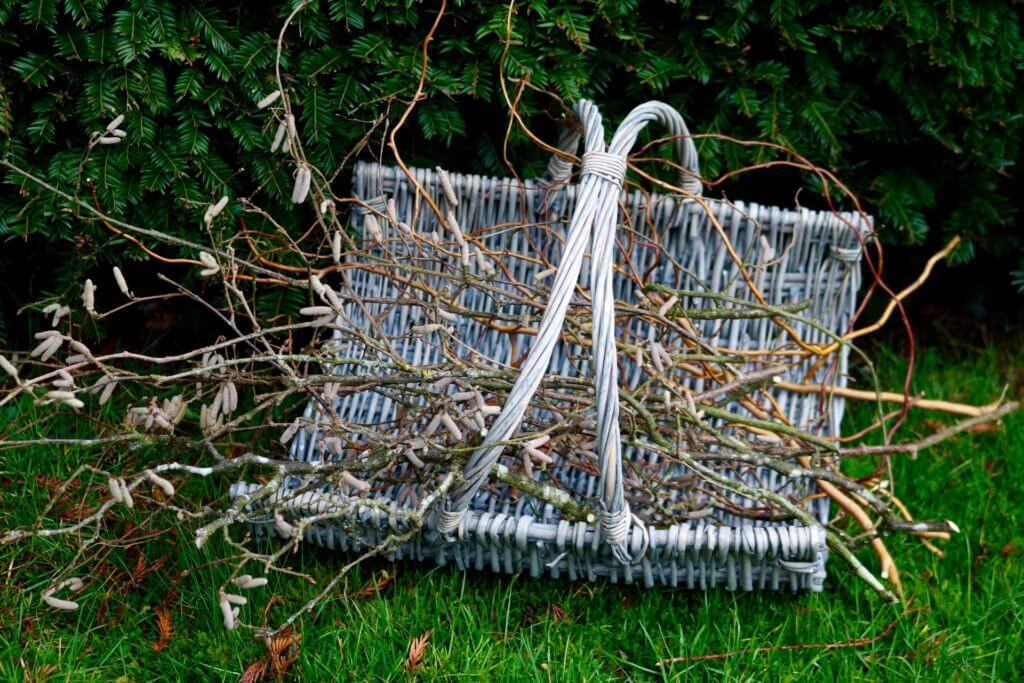
Most of the year you may not notice Hazel, a native plant common in woodland, hedgerows and gardens. It is most noticeable in early spring when you will spot the acid yellow catkins elongating and festooning the hedgerows and roadsides. It’s great in a native hedge but it also makes a useful garden plant and will suit any soil conditions. Good as a boundary specimen, it admittedly provides only light screening in winter but much heavier in summer when its attractive green leaves open.
Even small gardens can accommodate a hazel as it’s a classic tree for coppicing. If it gets too large you can cut each branch down at ground level and use the straight branches as supports for beans or sweet peas. If you do have space, let it grow into a spreading tree where it will look majestic at any time of year and provide hazelnuts for hungry squirrels.
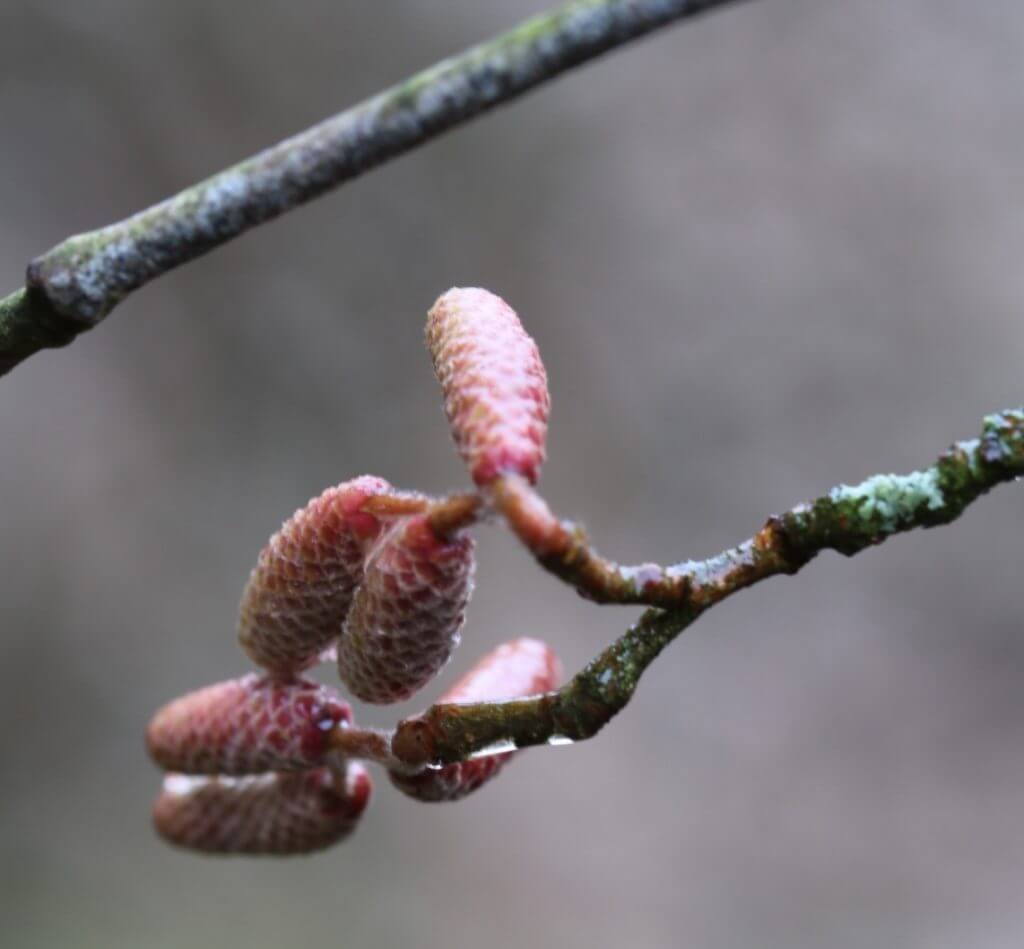
It’s early winter that I most love hazel most. Usually by December, and certainly by early January, the catkins are beginning to look like fat, pinky-brown segmented caterpillars.
If you like this look then cut some early as in a warm winter, the catkins will have turned yellow and started shedding pollen in January in warmer areas of the country. There’s no doubt that the dangly yellow catkins are attractive and worthy of display indoors, but cutting some ahead of Christmas will arrest their development and you can reuse the twigs in your home well into spring.
Combined with greenery and cheaper supermarket or florist flowers, the sprigs of hazel add an extra dimension to any arrangement. This triptych was very simple to arrange as the sprays have simply been pushed into the vases and the effect is lifted by the addition of hazel. It works well on a mantelpiece, or for a midwinter dinner, the three could be placed down the centre of a table with candles in between.
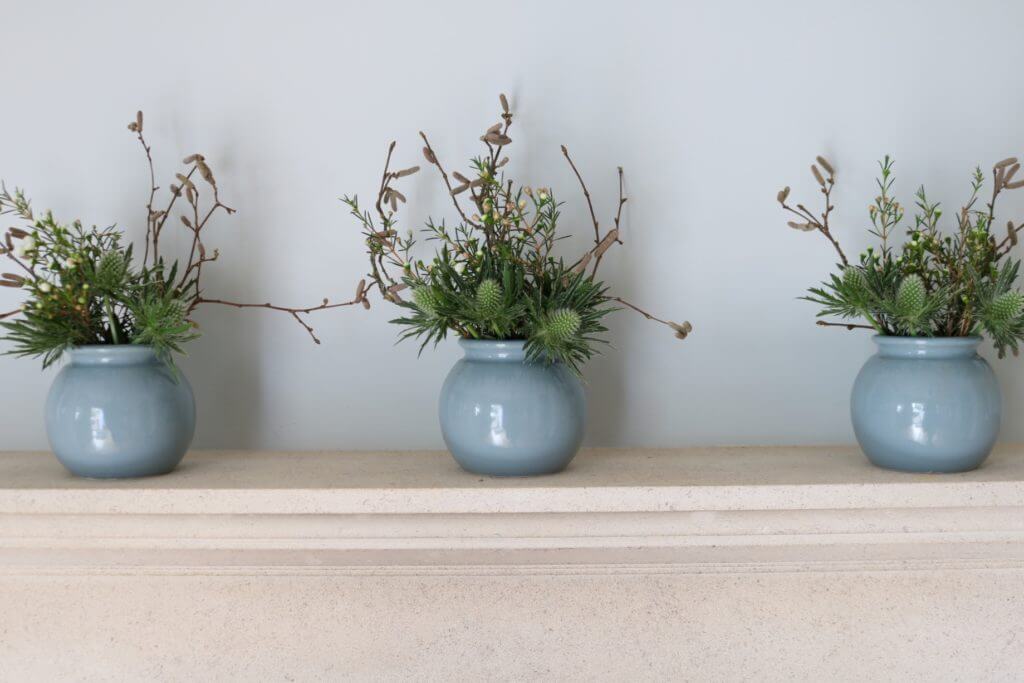
Here twigs have been pushed into the soil next to narcissus ‘paperwhite’ bulbs that are just beginning to shoot. They will provide a supportive framework for the tall flower stalk, which so often flop. The brown of the nascent catkins is a beautiful foil for the green stalks and fragrant white narcissus.
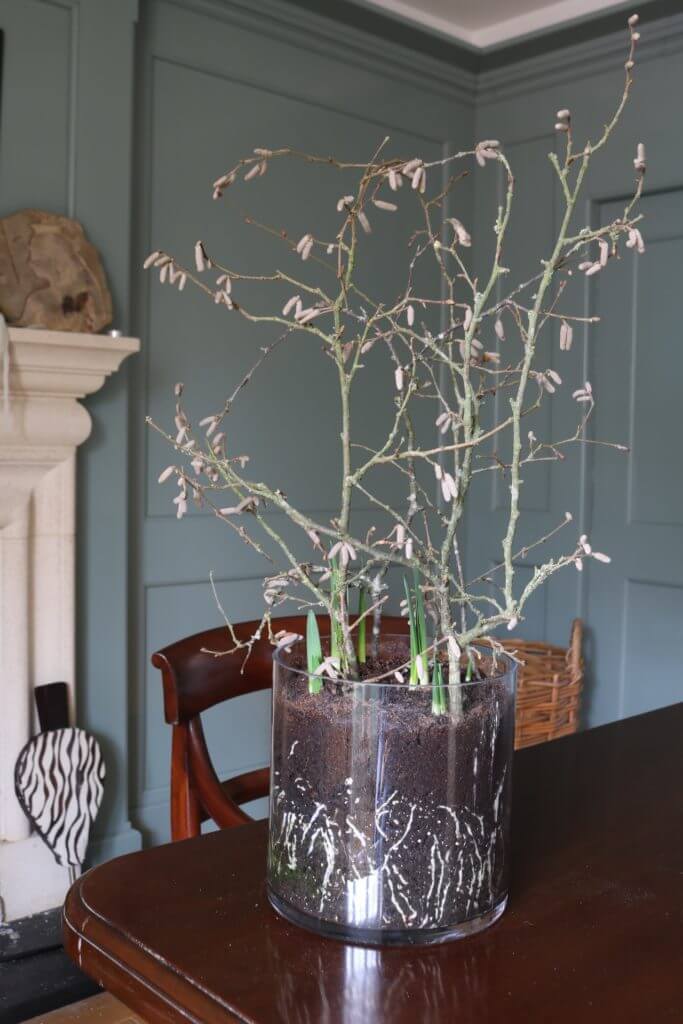

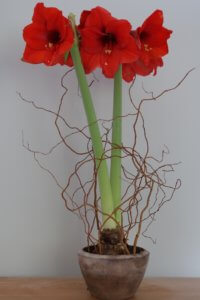

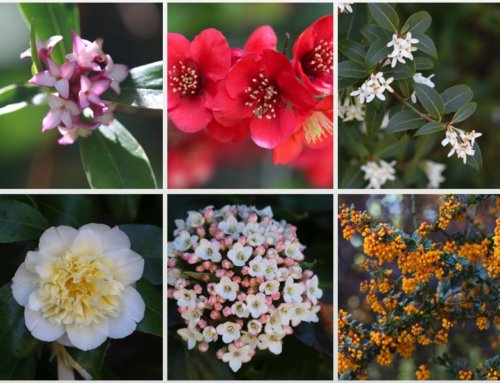
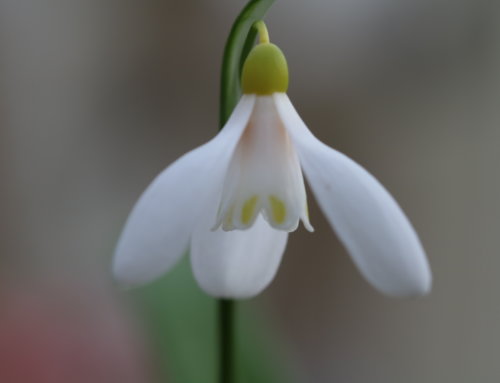
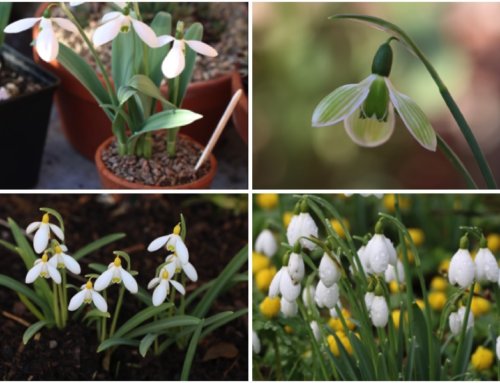
Great tips and sources. Love the photos. You are clearly a creative and passionate gardener. Looking forward to following your blog sitting in my garden with a cuppa planning all sorts of new and exciting projects.
Thanks. We all need some garden inspiration and a cuppa definitely helps.
It is really nice
Mahmoud
UJ
excellent ideas as indoor displays. I’ve been trying to find a source for my first cutting/seedling of twisted willow, but haven’t found a supplier. Can you suggest where I might obain any?
Thanks for the lovely feedback Malcolm. I was lucky to be given a cutting from a friend. It’s worth asking around to see if anyone grows it. I just looked on the RHS website – they have an online plantfinder and when you search for Salix babylonica tortusoas 19 nurseries come up and most do mailorder. I didn’t investigate price or delivery costs though. Hope you find one.